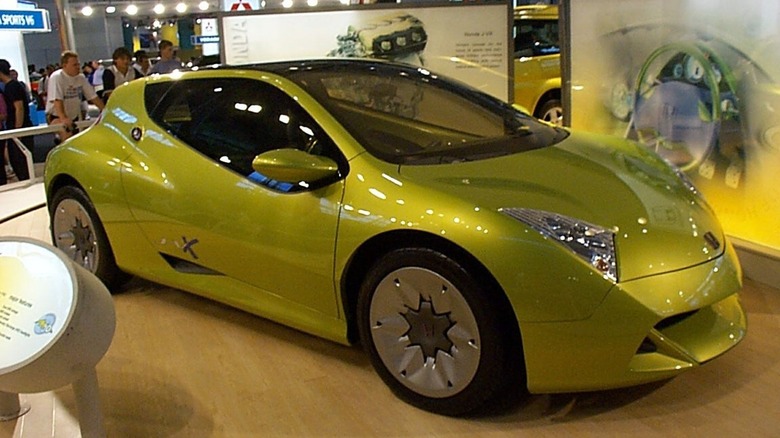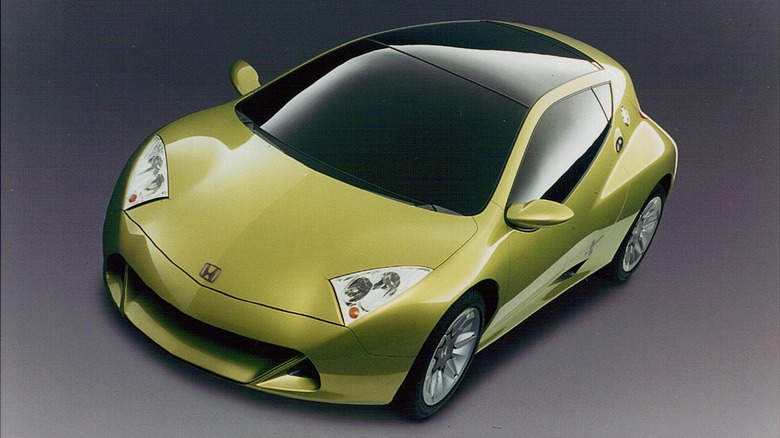The Honda JV-X Was A Concept Billed As The World's First Hybrid Supercar
By their very nature, concept cars are an attempt by automakers to prove an abstract idea or general concept can actually go from the design page into a real-world vehicle. Most concepts never get beyond the one-and-done auto show floor, but the advancements they showcase typically become standard equipment in future cars.
Such is the case with Honda's J-VX, the Japanese car builder's first foray into the world of hybrid technology. It first debuted in October 1997 at the Tokyo Motor Show, touting itself as a sporty driving experience while still being "environmentally responsible." It was meant to be Honda's answer to Toyota's Prius, just wrapped up in a much, much sportier package.
Ironically, the Prius launched as the world's first mass-market hybrid (via History) in Japan the same month as the '97 Tokyo show (via Top Gear), putting Honda behind the proverbial 8-ball from the start. However, the Prius literally had no razzle dazzle about it whatsoever and could pass for any other run-of-the-mill compact, economy car on the road at the time. The J-VX at least looked like a sportscar.
At its heart was a lightweight 1.0-liter 3-cylinder VTEC gas engine sporting Honda's new direct fuel injection system tied to a small electric Integrated Motor Assist (IMA) motor/generator. The IMA fit between the engine and transmission and converted electrical power into kinetic energy when the car accelerated. When slowing down, the IMA turned the kinetic energy back into an electrical current (via Old Concept Cars).
This hybrid was meant to get your heart pumping
The J-VX wasn't weighed down by conventional electric batteries either. Instead, it was outfitted with what Honda called an "ultra-capacitor" that stored all the electricity from which the IMA system could pull. This setup allowed the sports car to go about 62 miles on a little less than a gallon of gas (via Old Concept Cars).
The interior was so devoid of accouterments that the only feature worth noting is Honda's Air-Belt system, seen for the first time in the J-VX. Upon impact, the shoulder and chest pads on the four-point harness would inflate to protect passengers from painful abrasions and general bruising (via Old Concept Cars).
If it looks familiar, it should. The almost identical GRX concept was in development in Honda America's Torrance Design Studio at about the same time, with one big difference: it ran a 1500cc six-cylinder engine from Honda's Gold Wing motorcycle (via conceptcarz.com). Both concepts helped spawn the production line of Insight hybrid vehicles (via Top Gear) two years later.
Honda America dusted off the GRX in 2006 and entered it in the Michelin Challenge Design at the North American International Auto Show, leading to confusion about these cars. This version was apparently spruced up with a spoiler, scissor doors, and in one account (via Top Gear), a vastly different 1.5-liter engine. Others contend it still had the 1500cc bike engine (via Motor Trend).
Whatever the case, it again proves that the role of concepts is integral to the development of the cars we see on the road every day.

